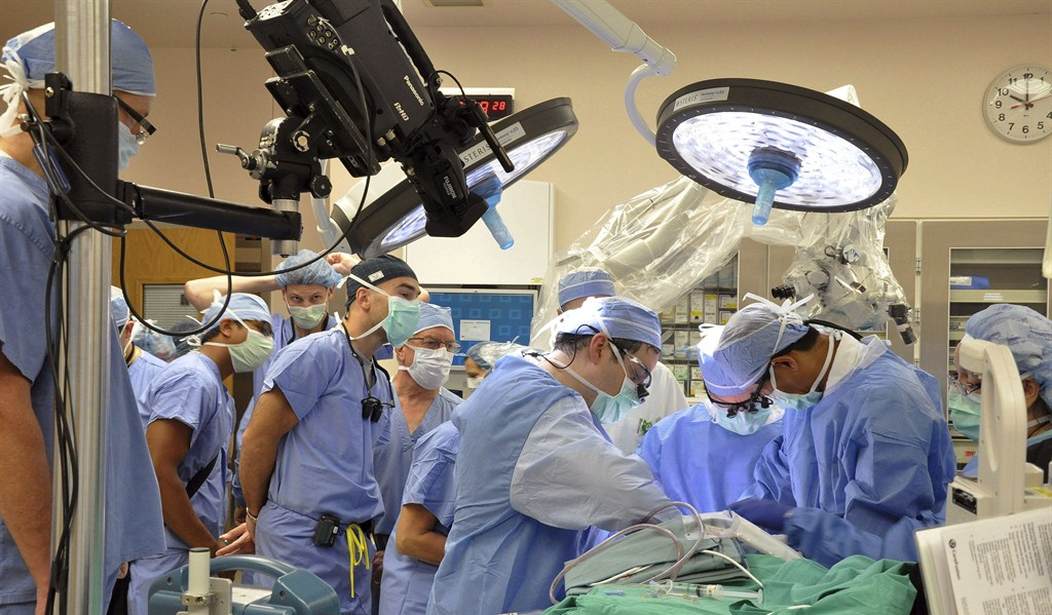So-called Big Box retail stores are the dominant retail model when it comes to selling vast quantities of products at competitive prices. Discount stores like Walmart have grown to such size that Super Centers are now common in major metropolitan cities. Home Depot and Lowes reinvented the lumber yard and turned it into a big hardware store/home-center. Target reinvented the department store, while Sam’s Club and Costco sell food, electronics, clothing, furniture and pharmaceutical products side-by-side, all under one big roof. Big Box retailers provide the convenience of one-stop-shopping, at prices that are lower than specialty stores. By contrast, the Big Box store in the health care world is the hospital; but it’s the last place you want to visit if you’re hoping for a good deal on medical care.
Consider these examples of hospital price-gouging. Increasingly, hospitals are buying physician practices. Nothing may appear different about your doctor's office, but the services performed in hospital-owned clinics come with higher price tags in the form of a “facilities fee”. Compare hospital-owned physician practices to a concept known as medical homes. A medical home is when a health plan pays its participating physicians to coordinate care for their patients, steering them to the appropriate care setting. One of the things a medical home does is try to keep plan members out of the hospital by paying physicians to keep members healthy; Physician visits are far cheaper than a hospital stay. A medical home also coordinates care after a hospital stay to prevent a readmission.
It is often said the ER is the most expensive place to provide routine care — so care in the ER should be limited to truly emergent conditions. A common belief among health policy wonks is that there are too many Emergency Room (ER) visits for conditions that are not true emergencies. A medical home’s care coordinator also tries to keep enrollees out of the hospital ER because ERs are more expensive than physician visits. In addition, an ER visit boosts the chances an enrollee will get admitted into the hospital even though they could have received adequate care as an out-patient.
Recommended
Writers may say a picture is worth a thousand words, but insurers and Medicare are discouraging doctors from ordering so many diagnostic images. The prevailing wisdom asserts that too much unnecessary, costly diagnostic imaging is being performed. Yet, medical images need not be costly. Nowadays, many medical images — such as CT scans and MRIs — are also performed at freestanding radiology clinics. Freestanding imaging centers provide stiff competition to hospital imaging centers. A hospital CT scan or MRI can cost upwards of $3,000, although Medicare would not reimburse that much. The comparable price at a freestanding imaging center is often as low as $300. The same is generally true of laboratory medicine. Lab work performed at an independent lab usually costs far less than blood chemistry performed in a hospital lab.
In the 1980s, ambulatory surgery centers (ASCs) were a relatively new phenomenon. In their early days, they were often looked down upon by doctors and hospital executives. After all, what’s the point of walking a few blocks away from the hospital campus to perform surgery at a small surgical center? The attraction of ASCs (then and now) is to perform surgeries at prices much lower than in the hospitals’ operating rooms. This mostly applies to “day-surgery” patients who arrive early for treatment and leave later that same day. Increasingly, doctors and investors are building micro-hospitals and small specialty hospitals where patients needing an extra day to convalesce after surgery can spend the night.
The economics of medical care are indeed strange. At first glance, hospitals should be able to leverage their economics of scale to offer competitive prices — sort of like the Big Box retailer of the health care world. Costco, Sam’s Club, Target, Home Depot and Lowes have a great selection at low prices — conveniently located under one roof. However, the reality is that hospitals are the place to avoid if you’re looking to hold costs down. It’s a smart move for health plans to steer patients to lower-cost services outside the hospital.
So why does everything cost more in a big box hospital? It’s not because hospitals have high overhead (Home Depot has high overhead). It's the perverse effects third-party payments have on competition. Ninety-seven percent of hospital bills are paid for by third-parties, so hospitals don’t have to compete with each other for patients on the basis of price. Another reason everything costs more in a hospital is because Congress tolerates it. In a world where third-party payment was less pervasive (or perhaps better designed), Hospital Depot would be the one-stop-shop for health care services at the competitive prices.

























Join the conversation as a VIP Member